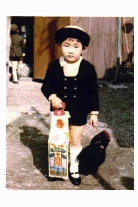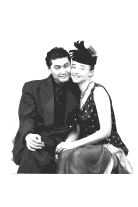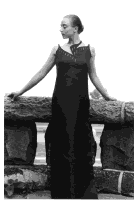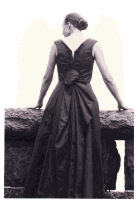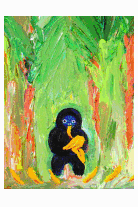I was born in 1962 in Tokyo. I grew up just like an average Japanese. I went to junior high, high school, and to University. Unfortunately, I goofed off and did not study, dropping out at the end of the fourth year. I got a job at a children's clothing company doing accounting, sales, and production management. I learned a lot about business and it was fun, but after four years, I decided to change my job. My Dad asked if I wanted to go to America for a while since our family had hosted an exchange student from Chicago.
The first day I arrived in Chicago, our friend took me to College of DuPage and I enrolled in English as a Second Language classes for a half year. With a student visa, I took many classes including Fashion and Art. I found that I was good at Fashion Design. They taught me how to make patterns, drape, and draw to express the ideas in my head. I met my future wife, Stacy, in Fashion class. She had already worked sewing and designing clothing as a career. She taught me how to sew my elaborate ideas and complex designs and how to think in three dimensions when sketching on paper. I actually won my school’s “Fashion Student of the Year” and then “Best Overall Designer” in a major fashion competition in the Midwest region. We married and have been working together in our business making fine custom clothing for clients. We make original designs and sew everything ourselves. Over the years we have had ready-to-wear clothes in local boutiques and trunk shows, as well as special one-of-a-kind designs displayed in exhibitions and galleries. One of our clients was a fashion stylist for a photographer who does print advertising for commercials. She spread the word about our good work. Ever since, we have had fun working on commercials in TV and magazines, on TV show and feature movies, some with celebrities and movie stars, that are seen nationally and internationally.
I enjoy making evening dresses. The design process is very interesting: to sketch on paper, drape fabric on a dress form, or just cut and sew and see how the idea develops. If an idea doesn’t work, I create a solution. Sometimes mistakes change into new designs; even the process of making clothes creates new ideas.
When I told Stacy that I always wanted to learn to paint pictures, she gave me canvas, paint, and brushes and encouraged me to paint freely, not to try to paint a masterpiece. As I learned how to use the brush and paint, my colorful blob pictures evolved into paintings of cute animals that I saw at the zoo, on TV nature shows, or on the street. I was surprised when friends and clients liked and wanted to buy them. For fun, I entered the big local arts festival and was surprised again, to be chosen for the “Curator’s Choice” exhibition. I still amuse myself that I am self taught, and paint animals that make people smile.
When I was a teenager in Japan, I wanted to play guitar. I had several, but did not know I could take lessons to play them--I thought you could just pick it up and start playing! Here in Chicago, I thought about designing an electric guitar, but it was too big of a project. Then I thought about a smaller project: making a violin! My wife said “how will you know if the violin sounds good if you don’t know how to play one? Maybe you should learn how....” Here starts my musical adventure! During 2 years of violin lessons I learned how to read music for the first time. My wife was very patient with me and “Mr. Squeaky” the violin. Then I started guitar lessons at The Old Town School of Folk Music. I was amazed that hundreds of people of all ages were taking beginner guitar lessons with me! Through lots of practice, I can play pretty well. I learned how to sing, and I’m no longer shy about performing songs in front of people. Our “ middle -aged-guy” band gets together and plays blues and Beatles songs for fun. Here in Chicago, I have found a creative environment that nurtures talents I didn’t know I had. I have been able to live a creative life, in work and play, with the encouragement of my wife and friends. When I was growing up, my impression of Arts in Japan seemed very traditional, where you had to be a proven award winner and master craftsman in order to have a creative life.
I miss Japanese food very much-- the tiny restaurants with a few stools that have the best noodles, or barbecue eel, or yakitori. Even the Chinese food in Japan is delicious and cooked differently than what I’ve had here in Chicago. America has been the Land of Opportunity for me, filling my life with creativity that I don’t think would have been possible had I followed the traditional Japanese career path. Here in Chicago, I have my place. People buy my paintings, my clothing and other things we make because they like what we do, and understand that art and creativity are my life. Being an artist is not easy, it is lots of hard work, but I try to have fun doing it!
* This article was originally published in Voices of Chicago, online journal of the Chicago Japanese American Historical Society.
© 2009 Yutaka Fujita


